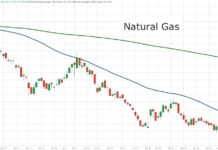by Greg Naylor November was somewhat uneventful for the U.S. economy, as the S&P 500 continued to drift higher and investors turned their attention toward consumer spending over the holidays. As well, the Affordable Care Act, or Obamacare, dominated the news with its unspectacular beginning.
Here is what happened in the capital markets, by the numbers:
Stocks & Bonds
The U.S. stock market continued its rise, and is on pace for an excellent year. Bonds continued to claw back some of their losses earlier in the year.
| S&P 500 Total Return | MSCI EAFE | BarclaysAggregateBond | Unadjusted CPI | |
| November | 3.05% | 0.56% | -0.37% | -0.26 |
| October | 4.60% | 3.31% | 0.81% | 0.12% |
| YTD 2013 | 29.11% | 17.74% | -1.47% | 1.44% |
Commodities & Currencies
NYMEX Crude Oil declined 4.1% in November, down to $92.32 per barrel. Gold moved lower by 5.4%, and is on track for a losing year. The U.S. Dollar Index was essentially unchanged in November, and is also basically unchanged year-to-date.
U.S. Economy
The Department of Commerce released its second estimate of 3rd quarter GDP. The first estimate was that the U.S. economy grew at a 2.8% annual rate in the 3rd quarter. This most recent, second, estimate was for a rate of 3.6%. This was a big, positive surprise to most analysts. Unfortunately, almost half of the growth came from businesses restocking inventory. Consumer spending remains lackluster. Ultimately, consumers will have to purchase the goods that businesses now have in inventory, so it remains to be seen if economic growth will continue strongly or suffer any setbacks.
The Department of Labor released unemployment data for November, indicating that the U.S. economy added 203,000 jobs in November and that the unemployment rate dropped from 7.3% to 7.0%. The consensus estimate was for a drop to 7.2%, so this was unexpectedly good news. In addition, the labor force participation rate ticked slightly higher, from 62.8% to 63%, although it still hovers around record lows. Ideally, improved employment translates into improved income, which translates into greater consumer spending. Oddly, despite a strong GDP number, personal consumption growth dropped from a 1.8% annual rate in the 2nd quarter to 1.4% in the 3rd quarter. Economic data continues to contain nuggets of both good and bad news.
The Institute for Supply Management had surprisingly good news, reporting that November’s manufacturing PMI rose to 57.3, from the previous month’s 56.4. This was another positive for the U.S. economy, indicating continued expansion in the manufacturing sector.
The National Association of Realtors (NAR) reported that the annual rate of existing-home sales in October increased by 6.0% from October 2012, although this represents a slower rate of growth when measured month-by-month. National median prices rose from the prior year by 12.8% to $199,500. Foreclosures and short-sales, as a percentage of overall sales, were at 14%, no change from September.
Summary
Most of us are aware that taxes rose at the beginning of this year. The negative side is obvious to all of us in smaller paychecks. In addition, the federal spending cuts through the sequester have had a negative impact in many areas of the economy. However, the Treasury Department recently reported on the positive side of this increased revenue and decreased spending: the federal deficit is shrinking.
For the fiscal year ending September 30th, the federal deficit was $680.3 Billion. Contrast this with the prior year’s deficit of $1.1 Trillion (or the $1.42 Trillion deficit of 2009). In the short term, less government spending and borrowing could decrease economic growth. However, in the long run, since the government is borrowing less, that theoretically leaves more money available for investment in the private sector.
This material was prepared by Greg Naylor, and does not necessarily represent the views of Woodbury Financial or its affiliates. This information should not be construed as investment, tax or legal advice and may not be relied upon for the purpose of avoiding any Federal tax liability. This is not a solicitation or recommendation to purchase or sell any investment or insurance product or service, and should not be relied upon as such. The S&P500, MSCI EAFE and Barclays Aggregate Bond Index are indexes. It is not possible to invest directly in an index.
Investing involves risks and investors may incur a profit or a loss. Past performance is not an indication of future results. There is no guarantee that a diversified portfolio will outperform a non-diversified portfolio in any given market environment. No investment strategy can guarantee a profit or protect against loss in periods of declining values.
Data Sources:
- www.standardandpoors.com – S&P 500 information
- www.msci.com – MSCI EAFE information
- www.barcap.com – Barclays Aggregate Bond information
- www.bloomberg.com – U.S. Dollar & commodities performance
- www.realtor.org – Housing market data
- www.bea.gov – GDP numbers
- www.bls.gov – CPI and unemployment numbers
- www.commerce.gov – Consumer spending data
- www.napm.org – PMI numbers
- www.bigcharts.com – NYMEX crude prices, gold and other commodities
- https://data.bls.gov/timeseries/LNS11300000 – Labor participation data
- https://www.bloomberg.com/news/2013-11-13/budget-deficit-in-u-s-narrows-on-record-revenue-for-october.html – Federal deficit data
- https://www.bloomberg.com/news/2013-10-25/export-slowdown-threatens-world-economy.html – HSBC article on exports
About Greg Naylor: Greg is a partner and co-founder of Fiat Wealth Management, an independent financial advisory firm in Long Lake, Minnesota. He has been investing for over 7 years and enjoys sports, reading, singing, and spending time with family. Greg is a 2004 graduate of the University of Minnesota and lives in South Minneapolis with his wife Kat.
Any opinions expressed herein are solely those of the author and do not in any way represent the views or opinions of any other person or entity.









